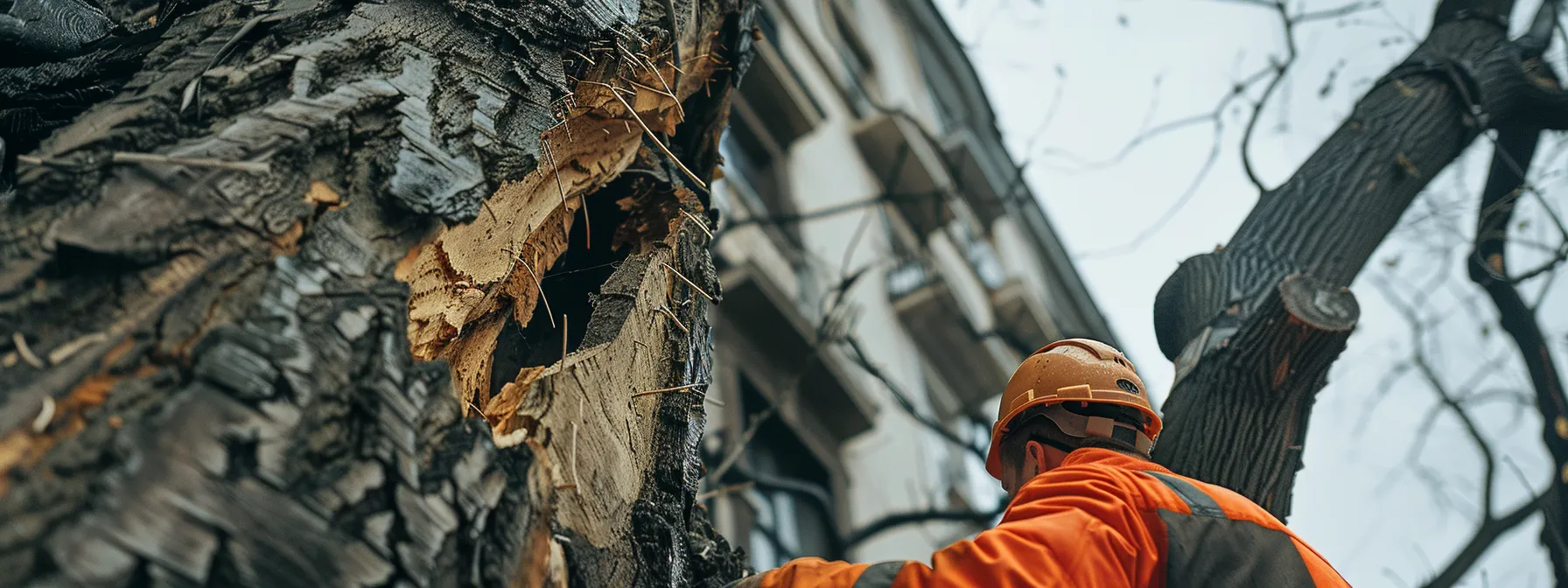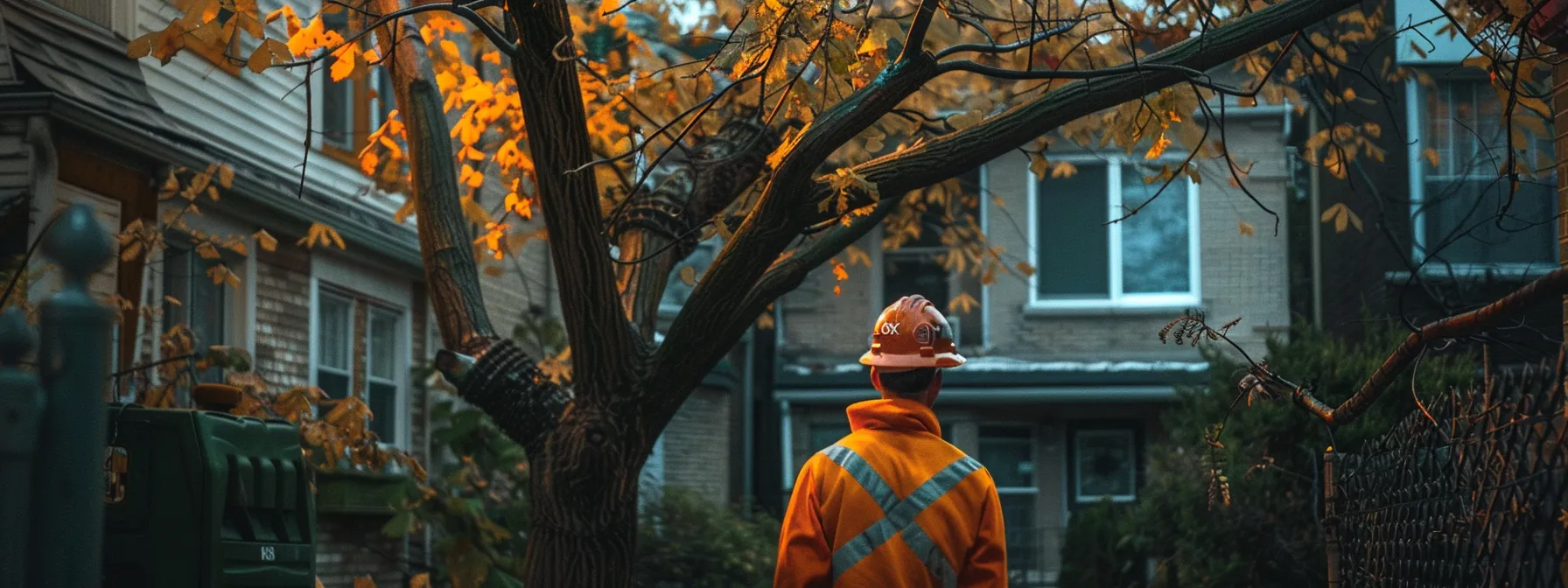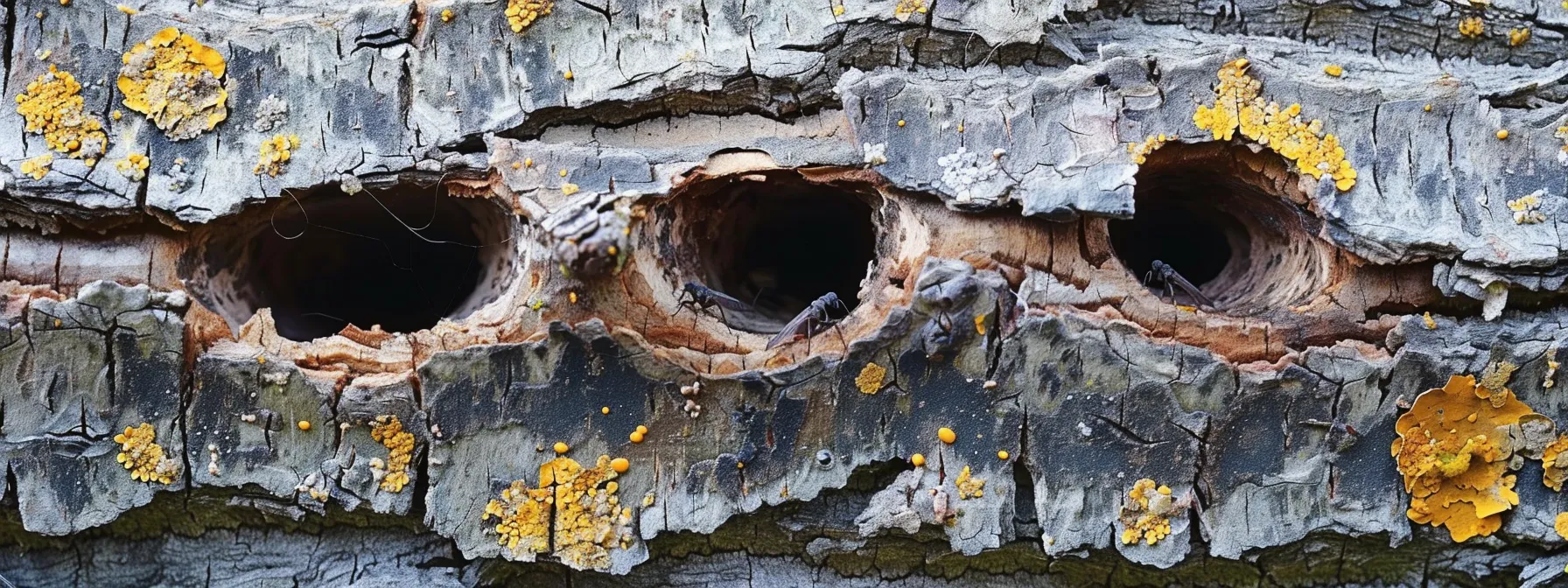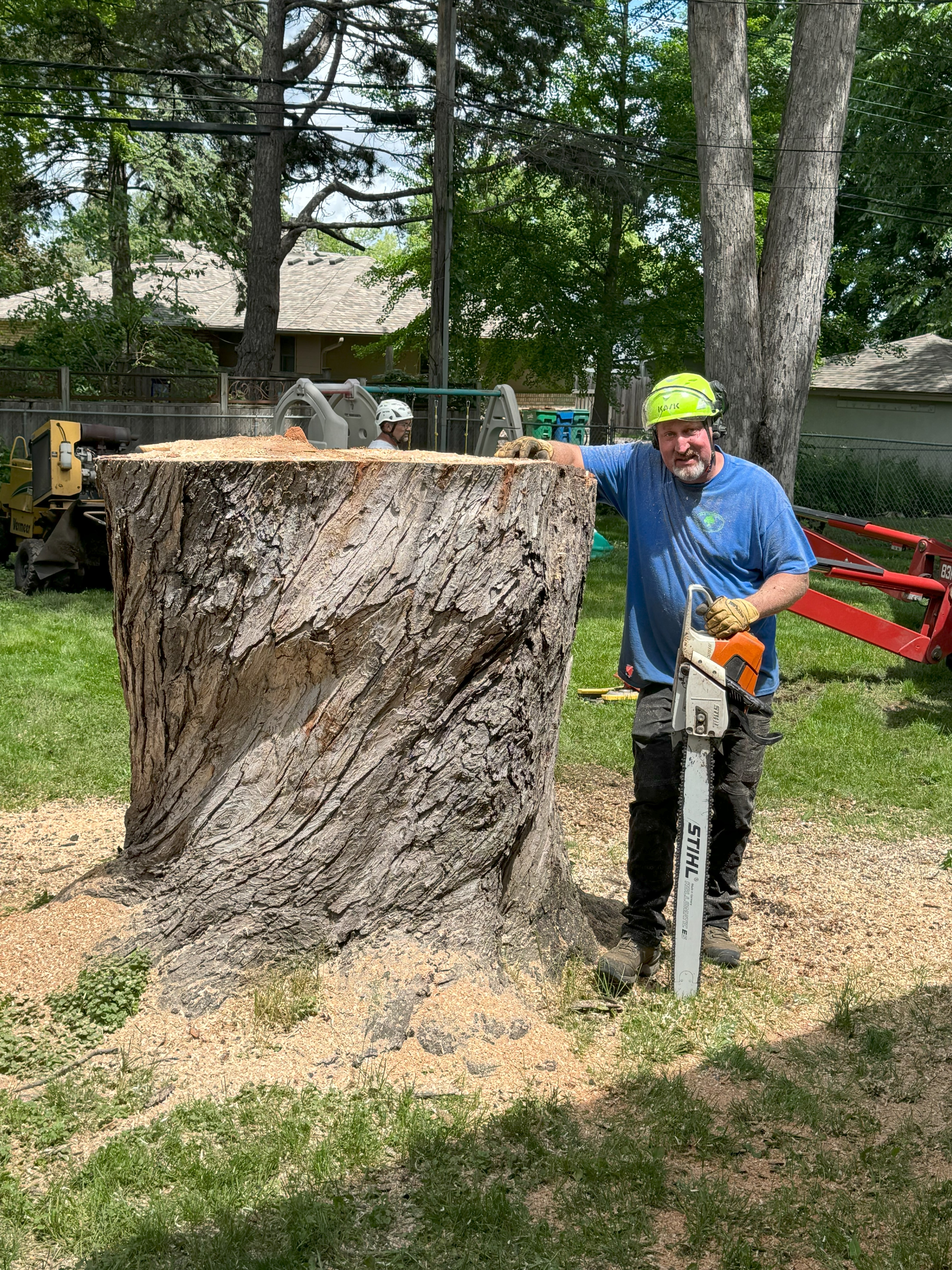
Warning Signs That Call for Tree Expert Intervention Now
Warning Signs That Call for Tree Expert Intervention
Trees add beauty and value to any property—but when something seems off, it’s important not to ignore the signs. Whether it’s a cracked trunk, leaning branches, or unusual fungus growth, these issues can point to deeper problems that require professional attention.
In this guide, we’ll break down the most common red flags homeowners should watch for—and when to call the pros at New Horizons Tree Experts for help.
🪵 1. Trunk or Branch Damage That Poses a Risk
Some of the most obvious signs a tree is in trouble show up on the trunk or major branches:

Deep Cracks or Splits in the Trunk
Cracks and splits in a tree trunk often indicate internal decay or instability. Left untreated, these can cause the tree to fail—especially during storms or high winds. If you notice a crack forming or deepening, it’s time to schedule a professional tree risk assessment.
Large Cavities or Rotten Wood
Hollow areas in the trunk or soft, decaying wood around the base are red flags. These cavities weaken structural integrity and may require tree removal services if the damage is too advanced.
Leaning Trees
A tree that’s started to lean more than usual—especially after a storm or heavy snow—could have damaged or compromised roots. In some cases, leaning trees can be saved with proper support and care. In others, urgent removal may be the safest choice.
Broken or Hanging Limbs
Dangling or broken limbs are a danger to people, vehicles, and property. Our tree trimming team can safely remove hazardous branches before they fall.
Mushrooms Growing on the Trunk
Fungal growth around the trunk, especially shelf mushrooms, usually indicates internal rot. These trees are often far weaker than they appear and should be inspected right away.
🍂 2. Foliage or Bark Issues That Signal Decline
Changes in a tree’s leaves or bark can reveal early-stage problems before they turn dangerous.

Wilting or Discolored Leaves
If leaves are turning yellow, brown, or falling early (outside the normal fall season), your tree may be under stress from disease, pests, or poor soil conditions.
Sparse Canopy or Bare Branches
When the upper limbs of a tree aren’t leafing out, that’s often a sign of poor circulation or root damage. We see this a lot during land development or in compacted soil.
Peeling Bark or Visible Cankers
Flaking or missing bark exposes trees to pests and disease. Combined with cankers or oozing sap, this is often an indicator that decay is underway.
Odd Growths or Fungi on Branches
Fungal blooms, weird swelling, or odd textures on branches can signal disease that could spread across your yard. Quick action can stop it from getting worse.
🌳 3. Root Zone Problems You Can’t Ignore
What’s happening below ground is just as important—and often goes unnoticed until the damage is done.

Soil Heaving or Cracks at the Base
If the soil around your tree is lifting or cracking, it could mean the roots are shifting or being pushed by internal pressure. This is often a sign of failure in progress.
Visible Root Rot or Fungus
Mushrooms or white mold around exposed roots suggest root rot. This is one of the most common causes of unexpected tree collapse.
Damage from Construction or Landscaping
Recently installed driveways, patios, or hardscaping can crush or cut tree roots. If you’ve had work done nearby, watch for changes in the tree’s canopy and overall posture.
Poor Drainage or Standing Water
Water pooling around the base of your tree can suffocate roots and cause rot. We often correct these issues with land clearing and drainage solutions.
Girdling Roots
Roots that circle tightly around the trunk can choke a tree over time. These are especially common in trees that were improperly planted or grown in pots too long.
🌩️ 4. Warning Signs Before a Storm Hits
Some structural issues don’t seem urgent—until a windstorm or ice load causes major damage.

Brittle, Cracking Branches
If limbs snap with little effort, it’s likely they’ve already died off. These should be trimmed back to reduce risk.
Large Leafless Sections
Bare areas high in the canopy can signal deadwood or disease that weakens the tree.
Weak v-Shaped Branch Unions
Where branches split in a narrow V-shape, they’re more likely to break under stress. Our tree trimming service can reinforce or remove risky limbs.
🐛 5. Signs of Pests or Disease That Need Treatment
Some tree issues aren’t structural but are just as dangerous over time.

Holes in the Bark or Tunnels in Wood
Tiny exit holes or sawdust piles at the base are classic signs of boring insects. In Minnesota, we often see emerald ash borer activity this way.
Insects on Leaves and Stems
Clusters of aphids, mites, beetles, or caterpillars can strip a tree fast. Early identification and treatment are key.
Oozing Sap or Bleeding Wounds
Sticky or weeping bark wounds usually mean the tree is fighting off infection or decay—and losing.
Powdery Mildew or Leaf Spot
Fungal infections like mildew and anthracnose can weaken your tree’s ability to photosynthesize and thrive.
📞 When to Call a Tree Expert
If you’re seeing one or more of these warning signs, don’t wait. A certified arborist from New Horizons Tree Experts can inspect your trees and help you make a safe, informed decision.
We offer:
Free consultations
Honest, expert evaluations
Affordable tree removal, trimming, and land clearing
Whether you live in Elk River, Big Lake, or Maple Grove, we’re here to help.

Frequently Asked Questions:
What trunk damage requires expert intervention?
Severe splits, deep cracks, fungal decay, and large wounds represent trunk damage needing expert care. These issues compromise tree stability and pose safety risks, making professional assessment and repair essential for property protection and long-term tree health.
How can changes in tree foliage warn risks?
Changes in tree foliage color may signal pest infestation, disease, or environmental stress, alerting homeowners to potential hazards before issues worsen.
What indicates problems in a tree's root zone?
Discolored leaves, slow growth, and root exposure often hint at issues. Soil compaction, water pooling, or decay odor also signal problems in a tree's root zone, requiring evaluation from experienced tree service professionals.
When do deadwood and loose branches need repair?
Deadwood and loose branches require repair when they show signs of decay, disease, or storm damage. Prompt attention ensures safety, prevents further issues, and improves overall tree health with professional risk assessment and timely action.
What are signs of pest infestation in trees?
Discolored foliage, premature leaf drop, and visible insect activity often signal a pest problem, prompting a professional tree service to assess the health and safety of the tree.
✅ Final Takeaway
Trees can’t tell you what’s wrong—but the signs are always there if you know where to look. Don’t wait for a limb to fall or a tree to uproot.
Call New Horizons Tree Experts today or request a quote online to keep your property safe, healthy, and beautiful.
Proudly Serving Central Minnesota:
Big Lake MN, Foley MN, St. Michael MN, Sauk Rapids MN, Elk River MN, Zimmerman MN, Buffalo MN, Monticello MN, Minneapolis MN, Plymouth MN, Maple Grove MN, Anoka MN, Blaine MN, Coon Rapids MN, and more!
